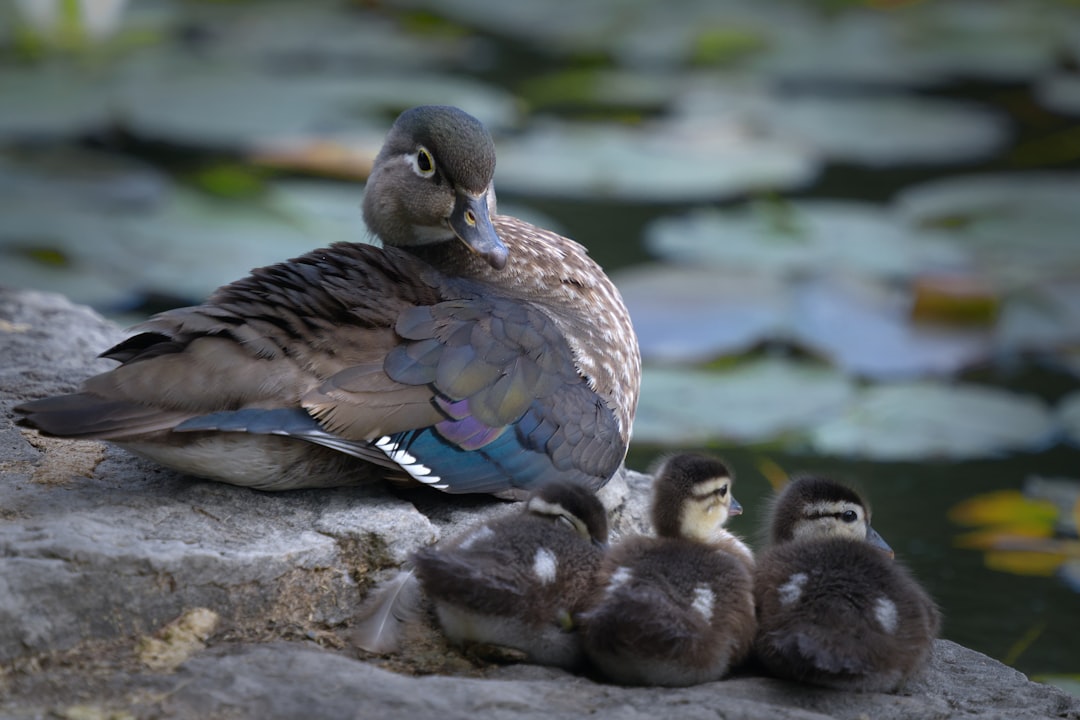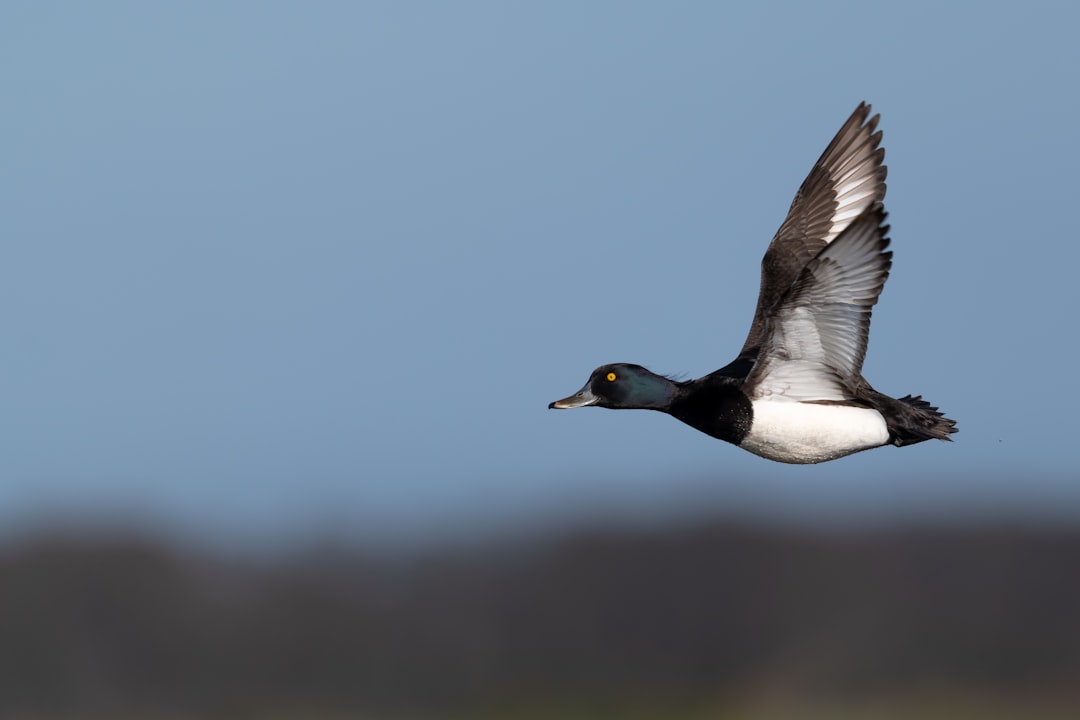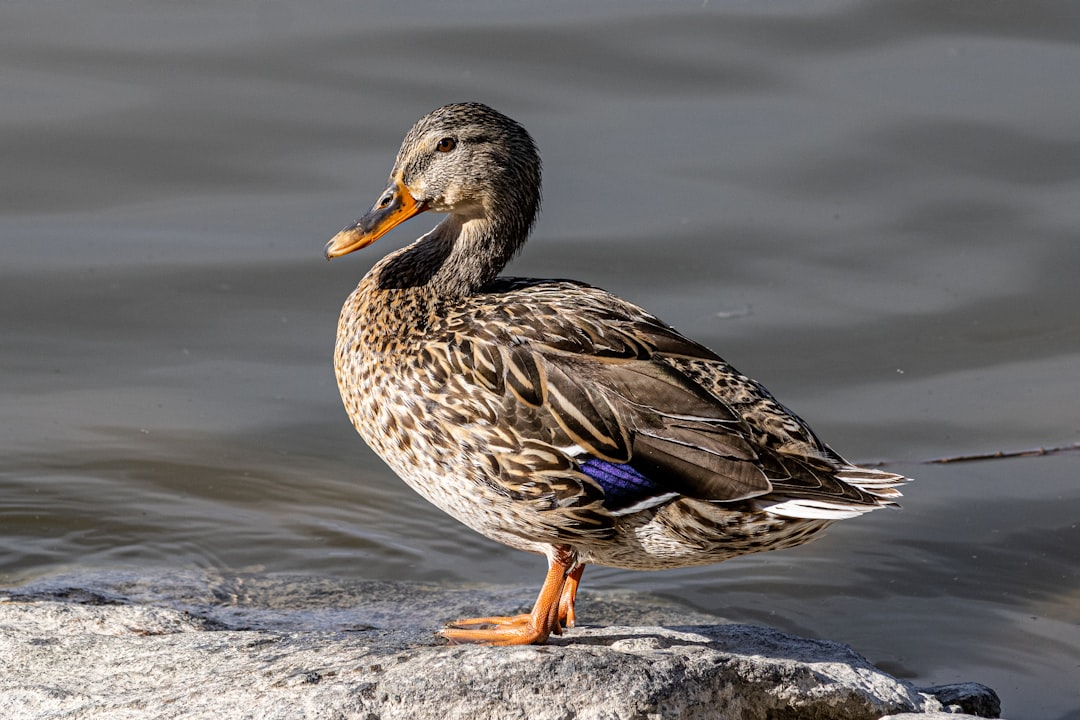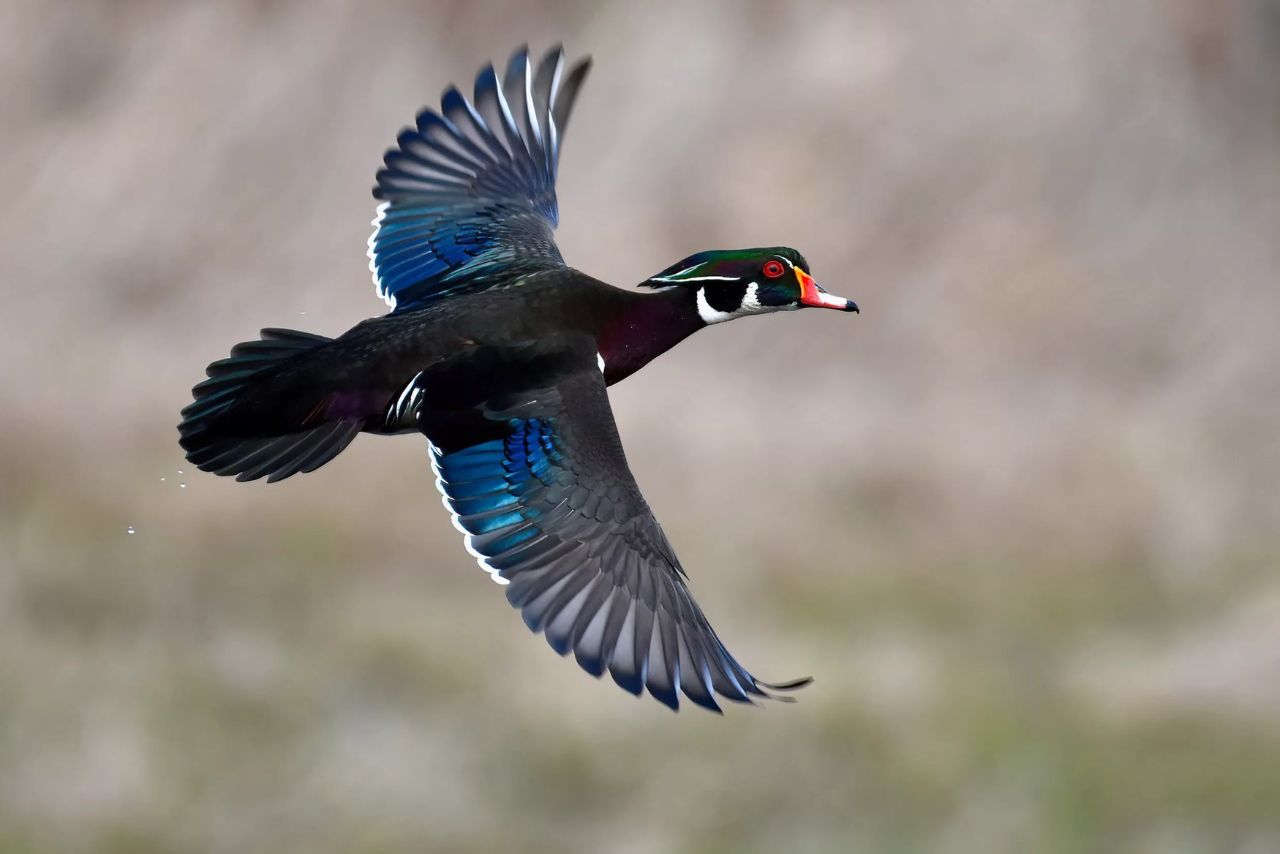Wood ducks are capable of achieving impressive speeds during flight, with the average speed ranging from 45 to 50 miles per hour.
They are known for their maneuverability rather than their speed, as they are able to make sudden turns and fly through narrow spaces.
Their unique wing structure, which allows them to move their wings independently, contributes to their agility in flight.
Additionally, wood ducks are capable of short bursts of speed when necessary, such as when evading predators or during migration.
Wood ducks are a popular sight in wetlands and ponds across North America. Known for their vibrant colors and unique appearance, these birds are also admired for their impressive flying abilities.
Many wildlife enthusiasts and birdwatchers may wonder: How Fast Do Wood Ducks Fly? In this article, we will explore the speed and other interesting facts about the flight of these beautiful birds.
What Are Wood Ducks?
Wood ducks are medium-sized birds that belong to the Aix genus. They are found in North America, from southern Canada to Mexico.
These birds are commonly seen near wetlands, ponds, and other bodies of water with trees nearby. They are known for their striking plumage, which consists of a mix of colors such as green, blue, red, white, and black.
These ducks are also known for their unique nesting habits, as they typically nest in tree cavities or nest boxes.
Their diet consists mainly of seeds, fruits, insects, and small aquatic creatures. During breeding season, males display their colorful plumage to attract females.
Female wood ducks lay around 10-15 eggs in tree cavities or nest boxes. After hatching, ducklings jump from the nest and follow their mother to the water below.
Physical Characters Of Wood Ducks
Aside from their unique appearance, wood ducks have several physical characteristics that contribute to their impressive flying abilities.
Their wings are short and broad, allowing for quick acceleration and maneuverability. They also have strong chest muscles that enable them to flap their wings rapidly, providing the necessary lift and speed for flight.
Additionally, wood ducks have sharp claws that help them grip onto branches and tree trunks, making it easier for them to climb in and out of their nesting sites.
What Are Some Fun Facts About Wood Ducks?
Feeding Behavior
Wood ducks are omnivores, which means they eat a variety of foods. Their diet includes seeds, fruits, insects, and small aquatic creatures.
They have also been known to feed on acorns and other nuts that fall from trees. Interestingly, wood ducks have serrated edges on their bills that allow them to grip onto slippery prey such as fish.
Young
After hatching, wood ducklings are able to leave the nest within 24 hours and follow their mother to the nearest body of water.

Once in the water, they learn to forage and find food on their own.
Wood ducks also have a unique ability to remember their nesting sites from year to year, and will often return to the same spot to breed and raise their young.
Nesting
Wood ducks have a unique nesting behavior that sets them apart from other duck species. Instead of building their nests on the ground, they prefer to nest in tree cavities or nest boxes.
Females will lay their eggs in a nesting site that is surrounded by water, which provides protection from predators.
Interestingly, wood ducks have been known to use the same nesting site year after year and will even return to the same tree if it’s still standing.
This behavior is called “nest site fidelity” and is rare among bird species.
Eggs
Female wood ducks lay around 10-15 eggs
in tree cavities or nest boxes. The eggs are creamy white and have a smooth surface. Incubation lasts for about a month, with both parents taking turns to sit on the eggs.Once the ducklings hatch, they are able to leave the nest within 24 hours and follow their mother to the nearest body of water.
Wood ducks are able to breed at one year of age and can live up to 5 years in the wild.
The Flight Speed Of Wood Ducks

The flight speed of wood ducks is an impressive feat of nature. These waterfowl are known for their agility and speed, reaching up to 47.1 miles per hour in flight.
Their wings are designed for both speed and maneuverability, with a distinct shape that allows for quick turns and dives.
To achieve such impressive speeds, wood ducks have powerful breast muscles that provide the necessary force for takeoff and sustained flight.
They also have a unique wingbeat pattern that allows for efficient energy usage and long-distance travel.
In addition, wood ducks are able to navigate through dense forested areas with ease, thanks to their exceptional vision and spatial awareness.
How Rare Is A Wood Duck?
Wood ducks are not considered a rare species, but they do require specific habitats to thrive. Wetlands with plenty of vegetation and trees near the water’s edge are essential for their survival.
Unfortunately, habitat destruction and hunting have led to population declines in some areas.
However, conservation efforts such as habitat restoration and nest box programs have helped to increase wood duck populations in many regions.
The protection of these birds is crucial not only for their own survival but also for maintaining the balance of wetland ecosystems.
How Climate Change Will Reshape The Range Of The Wood Duck?
Climate change is a significant threat to many species, including the wood duck. As temperatures rise and weather patterns shift, the range of suitable habitats for wood ducks may also change.
This could result in a decline in populations or a shift in their distribution to new areas.
Climate Threats Facing The Wood Duck
Some potential climate threats facing the wood duck include changes in precipitation patterns, which could alter the availability of suitable nesting sites and food sources.
Rising sea levels may also impact the coastal wetland habitats where wood ducks are commonly found. In addition, extreme weather events such as hurricanes and droughts can have devastating effects on local populations.
However, there is hope for the survival of these birds. By protecting and restoring wetland habitats, we can help ensure that wood ducks have a place to live and thrive in a changing climate.
Additionally, reducing our carbon footprint and advocating for policies that address climate change can help mitigate its impacts on wildlife.
Climate Change Effect Wood Ducks To Fly
While climate change may affect the range of suitable habitats for wood ducks, it is unlikely to have a direct impact on their flight speed.
Changes in weather patterns and extreme events could disrupt their migration and breeding patterns, ultimately affecting their populations.
As with many species, the survival of wood ducks depends on our ability to address the root causes of climate change and protect their habitats.
What Is The Lifespan Of A Wood Duck?
The lifespan of a wood duck is typically around 3-4 years in the wild, although some individuals have been known to live up to 10 years.
Factors such as habitat quality, predation, and disease can all affect the lifespan of these birds.
Despite their relatively short life expectancy, wood ducks play an important role in their ecosystem. They help to control insect populations and provide food for predators such as foxes and raccoons.
What Are Female Wood Ducks Called?

Female wood ducks are simply called “hens.” These hens are typically smaller than the males and lack the vibrant, iridescent coloring that male wood ducks are known for.
Instead, female wood ducks have a more subtle appearance with grayish-brown feathers and a white patch around their eyes.
This helps to camouflage them while they sit on their nests and care for their young.
What Are Male Wood Ducks Called?
Male ducks are typically called “drakes.” In the case of wood ducks, drakes have strikingly colorful plumage with intricate patterns and iridescent greens, blues, and purples.
These feathers serve as a display of their health and vitality to potential mates during breeding season. Male wood ducks also have distinctive red eyes and a distinctive crest on their heads.
Their unique appearance has made them a popular subject for birdwatchers and wildlife enthusiasts alike.
Factors That Influence The Flight Speed Of Wood Ducks
Factors That Influence The Flight Speed Of Wood Ducks:
1. Age and gender. Older wood ducks and males tend to have faster flight speeds due to their larger body size and stronger muscles.
2. Weather conditions. Strong winds and heavy rain can slow down the flight speed of wood ducks, while calm and clear weather can allow for faster flight.
3. Flight distance. Wood ducks typically fly at slower speeds during short flights, while longer flights can result in faster speeds.
4. Habitat. Wood ducks that live in open areas with few obstacles tend to fly faster than those in more densely vegetated areas.
5. Time of day. Wood ducks are diurnal, meaning they are most active during the day, and their flight speed can vary depending on the time of day. They may fly faster in the morning or evening when temperatures are cooler.
Conclusion: How Fast Do Wood Ducks Fly?
While the flight speed of wood ducks may not be directly influenced by climate change, it is important to consider the impact that changing weather patterns and extreme events can have on their populations.
By addressing the root causes of climate change and protecting wetland habitats, we can help ensure the survival of these important birds.
In summary, wood ducks are fascinating creatures with unique physical characteristics and behaviors.
FAQs
Do Wood Ducks Fly Faster than Other Types of Ducks?
Wood ducks are not known to be particularly fast flyers compared to other duck species.
Do Male Wood Ducks Fly Faster than Females?
Male wood ducks tend to have larger bodies and stronger muscles, which can make them slightly faster fliers than females.
What Factors Can Affect the Flight Speed of Wood Ducks?
Factors such as age, gender, weather conditions, flight distance, habitat, and time of day can all influence the flight speed of wood ducks.




